I first reviewed the LingVR headset back in October, and back then it was my favorite Google Cardboard-compatible headset.
My only quibble with it was how hard it was to open and close the latch in order to get to the smartphone. Since Google Cardboard doesn’t come with a decent operating system, you can’t install or switch applications from within the virtual reality viewer, or fiddle with settings. Instead, you have to take the phone out of the viewer, do what you have to do in the traditional way, with the touch screen, then put the phone back in the viewer and the viewer back on your head.
This turned out to be deal breaker, and the Ling VR, despite its sleek looks and otherwise great features, wound up sitting on the shelf next to the dozen or so other viewers I never use, while the Baofeng Mojing 3 and the Samsung Gear VR became my two go-to headsets.
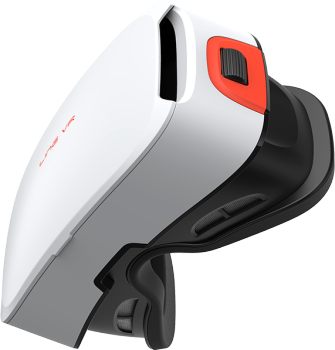
Well, today in the mail I got the new Ling VR 1S, an updated version of the Ling VR headset.
Disclosure: GearBest sent the headset to me for free, in the hopes that I would review it.
So let’s get started.
It comes in two boxes. A smaller one with a Bluetooth controller and battery, and a larger one with the headset itself.
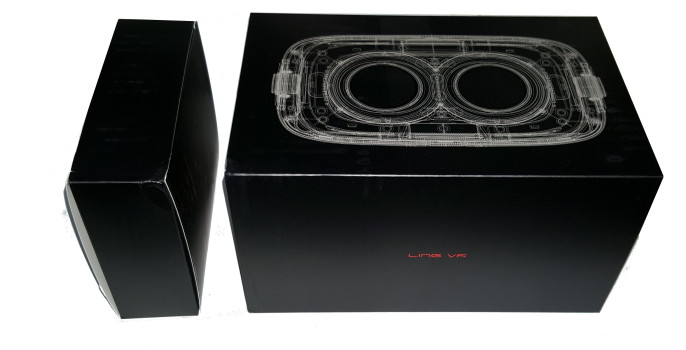
The inside box was in the company’s signature orange color, and had a nice magnetic closure.
The headset came well-protected in a couple of layers of packaging, and the white plastic surfaces covered in easy-to-remove protective tape. There was also a small instruction booklet, a lens cleaning cloth, and a replacement foam pad. The booklet is all in Chinese and the QR codes provided lead to the Chinese app, not to the Google Cardboard setting.
This is a significant problem with all the Chinese-made headsets I’ve tested so far, and some of the ones from other countries as well. Obviously, manufacturers would rather steer you to their own apps, but that’s not very useful if you don’t read Chinese.
The QR Code from the first Ling VR headset seemed to work fine, however:

At first glance, the two headsets look identical, except that one has a black face plate and the other one has a white one.
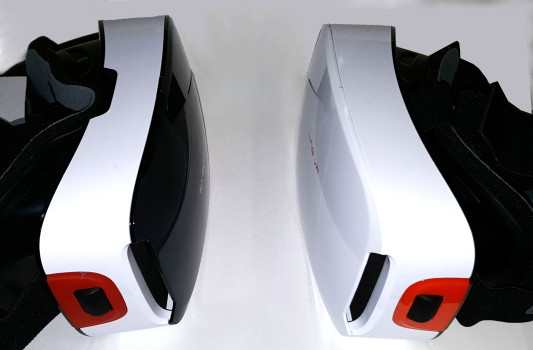
According to my kitchen scale, both weigh 12.5 ounces. The size specifications of the two headsets are the same, and both have adjustable head straps and lenses. According to the manufacturer, they’ve retained the basic design but upgraded the individual components.
For example, on the Ling VR 1S, the lenses now have an anti-fog coating.
The interpupillary distance adjustment has also changed. Previously, the two lenses moved apart smoothly, but now there are three positions they snap into. The company says they crunched a lot of numbers to come up with the three positions, and the idea is to improve convenience and to reduce “ghosting.” I take it this is what happens when the lenses get moved unintentionally.
Similarly, the focal adjustment knob on the side of the headset is supposed to move less smoothly so people don’t accidentally change the focus. I, personally, couldn’t tell the difference between the two.
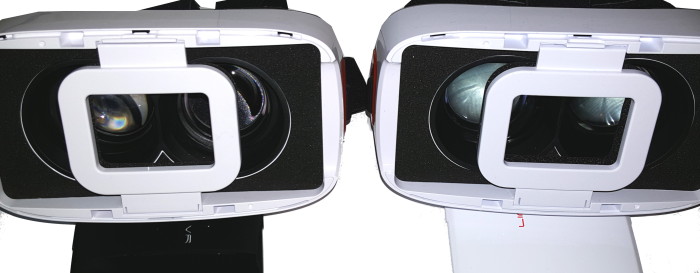
The latch has been slightly redesigned and no longer threatens to remove your fingernails when you try to open it, but inserting a phone is still a cumbersome, two-step process that requires both hands. I have a thin case on my smartphone, and it fits into the headset with the case still on, so that’s a big plus.
Both headsets have a field of view of 90 degrees, which is decent and a good fit for virtual reality games. It’s almost as good as the Samsung Gear VR when it comes to the field of view.
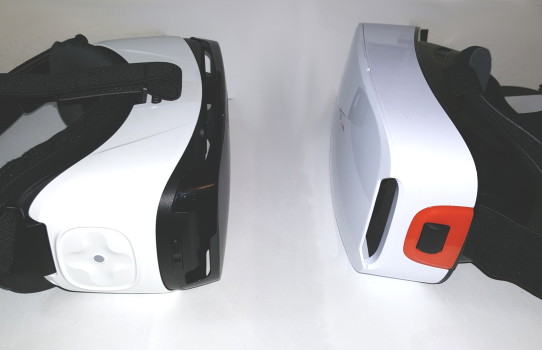
Both of the Ling VR hedsets look decent next to the Samsung Gear VR — you won’t be embarrassed using it in mixed company.
The big difference between the two is that the Gear VR has a track pad on the side and a couple of buttons and some extra sensors. The Ling VR has no additional functionality in the headset at all, not even a basic button.
In addition, the Gear VR comes with its own app store with a much smaller — and pricier! — selection of apps. The Ling VR, by comparison, can run all the 1,000-plus Google Cardboard-compatible virtual reality apps in the Google and Apple app stores.
One usability difference, which is an issue for a lot of people is that the padding that touches your face is wider on the Gear VR than on the Ling VR, meaning that you can wear glasses with the headset. My glasses would not fit into the Ling VR or Ling VR 1S.
For the next iteration, I urge Ling VR to get rid of the latch altogether and replace it with a simple magnetic closure that makes it easier to drop the phone in — and to widen the face area to fit glasses.
Bottom line
If you are choosing between the Ling VR and the Ling VR 1S pick the latter for the anti-fog lenses. On GearBest, the price difference is just $3, so a no-brainer there.
However, if you already have a Ling VR and are considering upgrading, the Ling VR 1S is not a substantial improvement.
Instead, if you are looking to upgrade, and have a late-model Samsung phone, the Gear VR is where you want to go next. But keep the Ling VR around, so you can still play the Google Cardboard apps, too.
- OSgrid back online after extended maintenance - April 16, 2025
- Analysts predict drop in headset sales this year - March 25, 2025
- OSgrid enters immediate long-term maintenance - March 5, 2025
